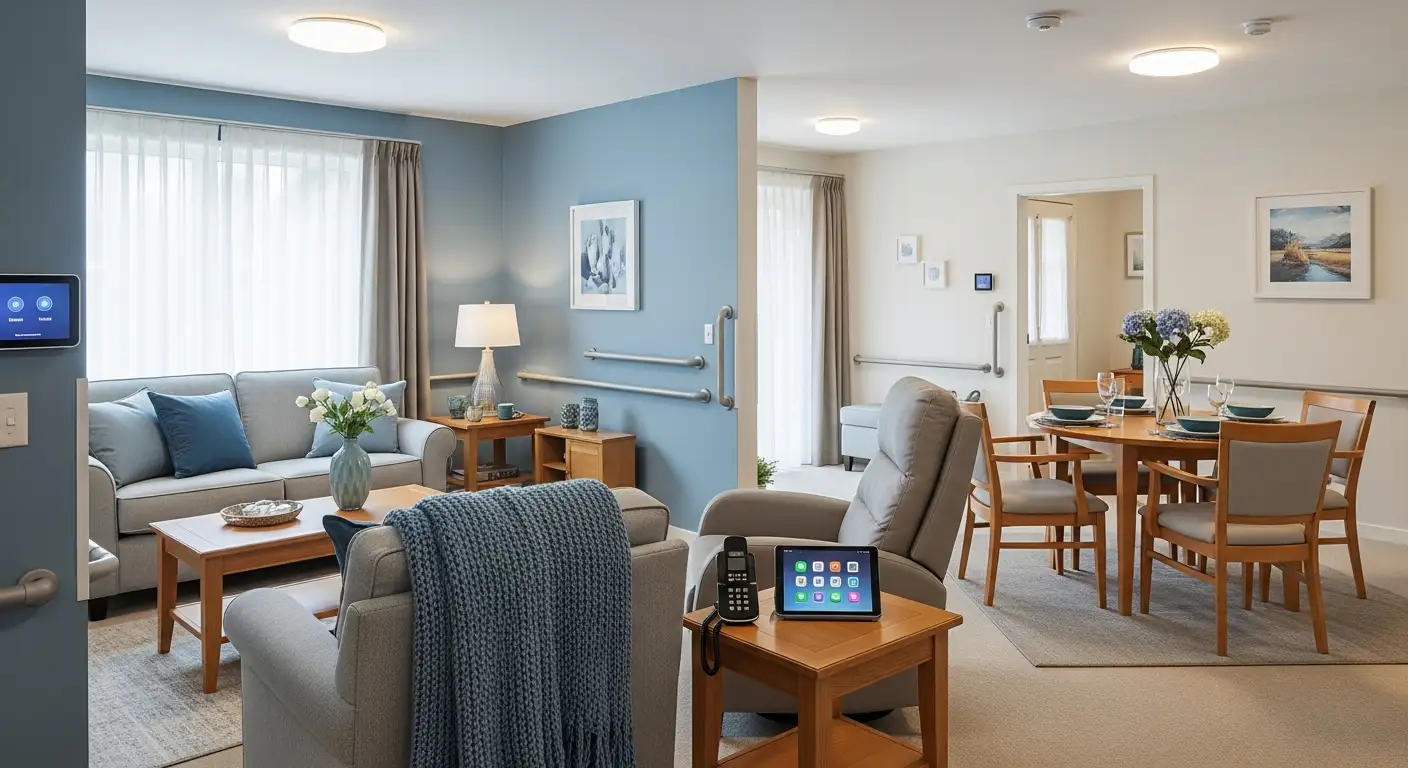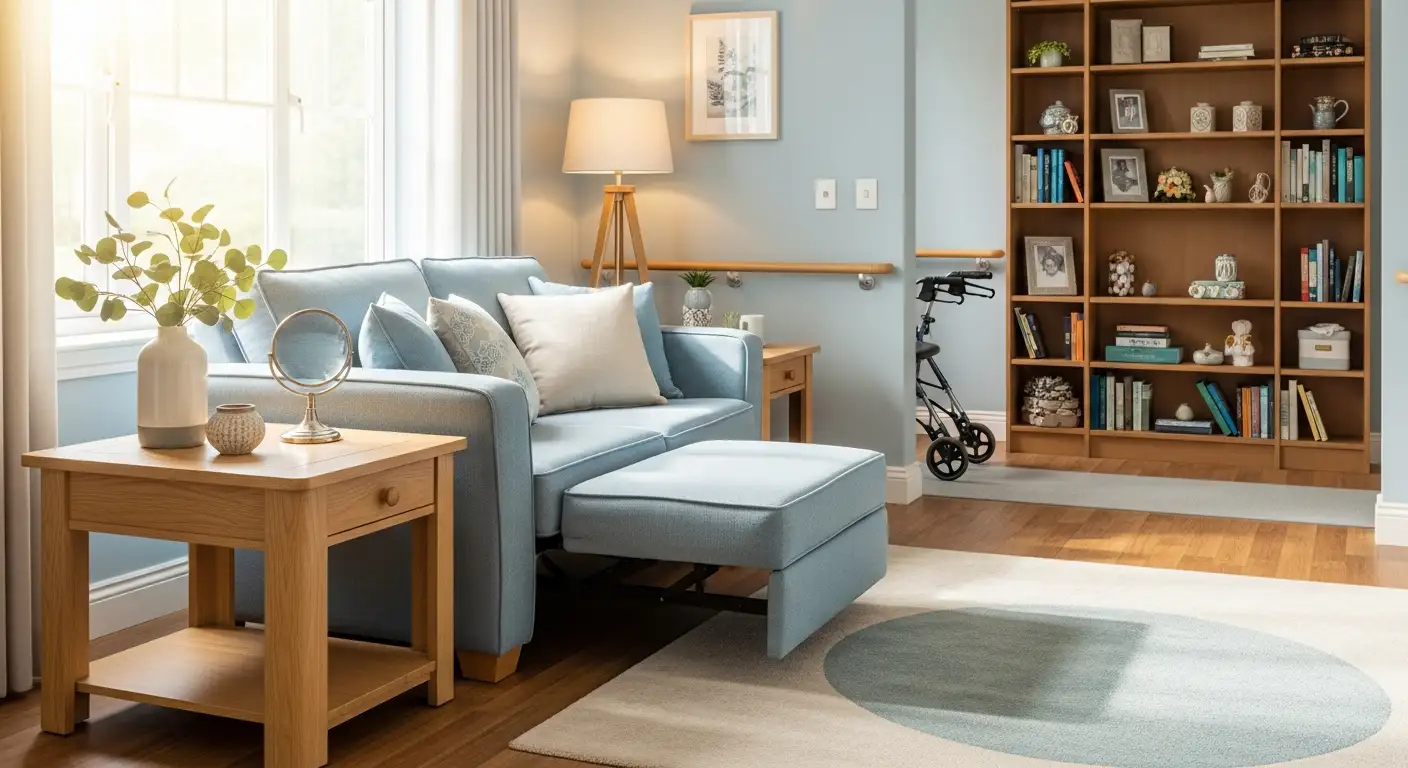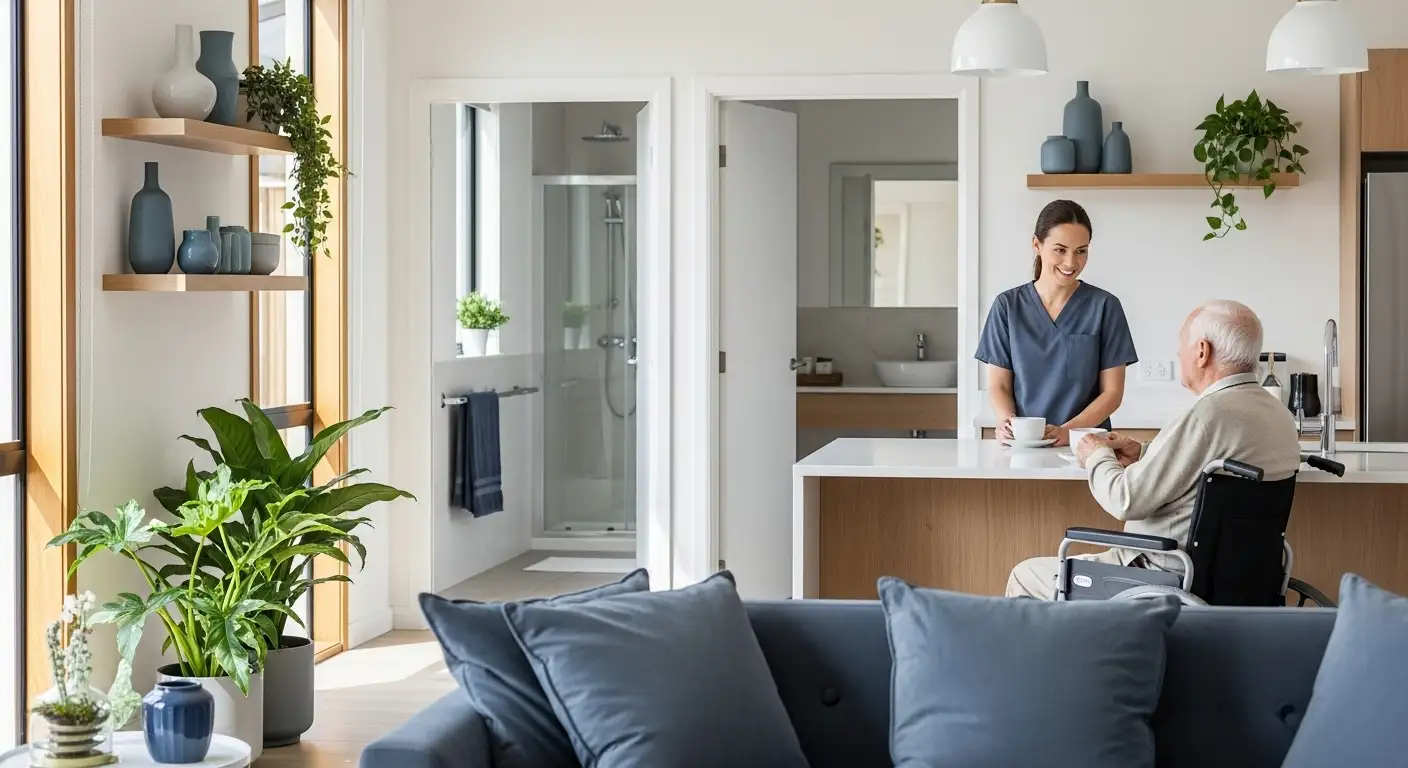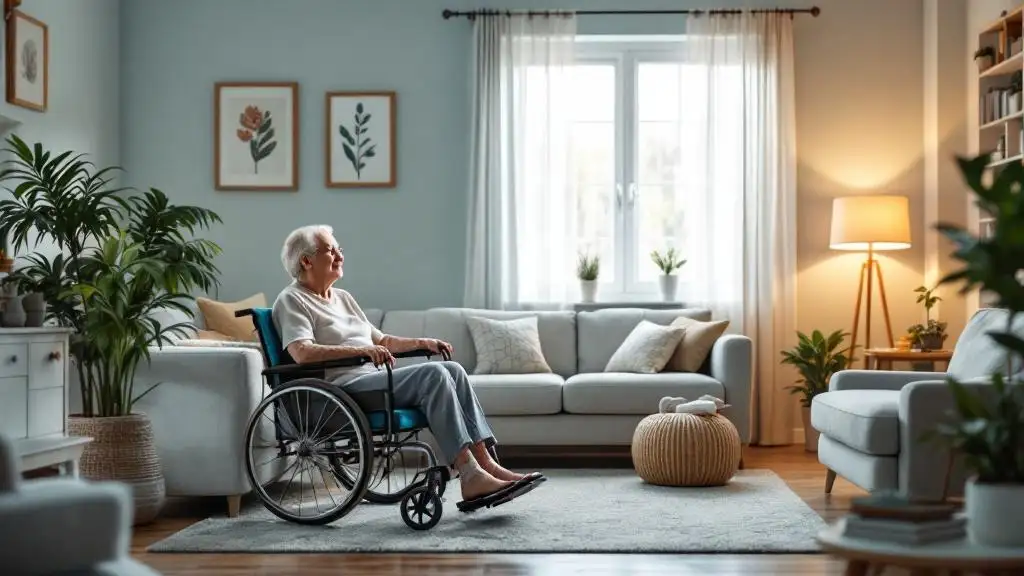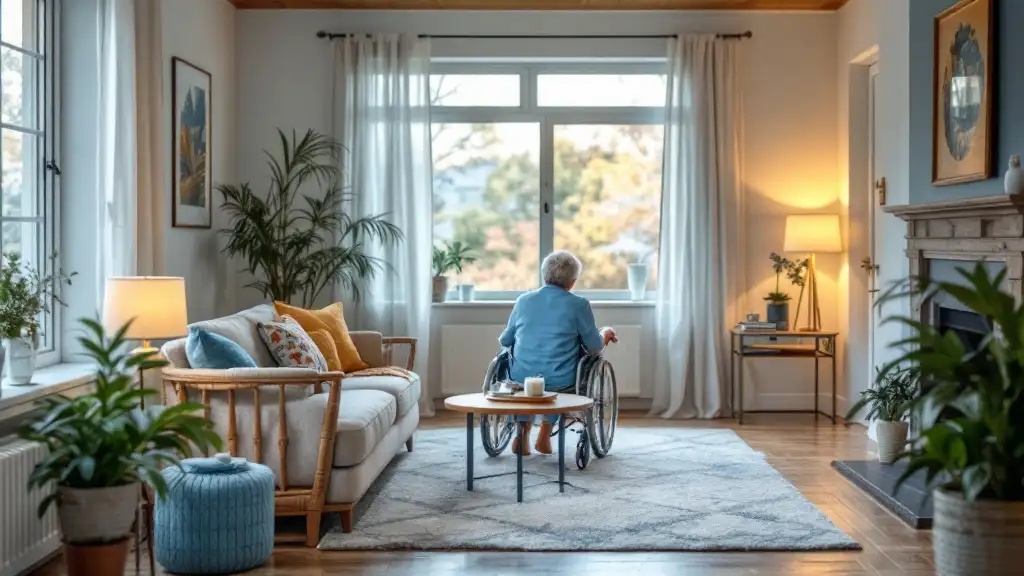In-Home Physical Therapy Essentials
Discover the must-have essentials for in-home physical therapy. Empower your recovery with tools designed for convenience and progress monitoring.

Essential Tools for In-Home Physical Therapy
When engaging in in-home physical therapy, having the right tools can greatly enhance your exercise routine and facilitate your recovery process. Here are three essential tools that can be beneficial for your in-home physical therapy sessions:
Resistance Bands
Resistance bands are versatile tools for both strengthening workouts and physical therapy exercises. They come in sets with multiple strength levels, allowing you to gradually increase the resistance as your strength improves. Resistance bands can target specific muscles that are difficult to isolate, such as the rotator cuff. They are inexpensive, portable, and suitable for various types of exercises. Whether you are looking to improve your overall strength or target specific muscle groups, resistance bands can be an effective addition to your in-home physical therapy routine.
Stretching Straps
Stretching straps are designed to assist with stretching exercises and can help increase your range of movement in a safe and functional way. These straps provide support and leverage, allowing you to perform exercises that would typically require a partner. By using stretching straps, you can achieve a deeper stretch and improve flexibility. They are particularly useful for individuals who may have limited mobility or struggle with certain stretching movements. Incorporating stretching straps into your in-home physical therapy routine can help optimize your stretching sessions and improve overall flexibility.
Exercise Balls
Exercise balls, also known as physio balls or Swiss balls, are versatile tools that can aid in various aspects of physical therapy. These inflatable balls come in different sizes to accommodate different heights and body types. Exercise balls can be used for stretching exercises, building core strength, improving posture, and enhancing balance. They provide an unstable surface, forcing your muscles to engage and stabilize your body during exercises. This can help improve core stability and proprioception. Additionally, exercise balls can be incorporated into strength training exercises to add an extra challenge and engage multiple muscle groups simultaneously.
Using these essential tools for in-home physical therapy can provide additional support and variety to your exercise routine. However, it's important to consult with your physical therapist before incorporating any new tools or exercises to ensure they are appropriate for your specific condition and goals. By utilizing resistance bands, stretching straps, and exercise balls, you can empower your recovery and make progress towards your rehabilitation goals from the comfort of your own home.
Additional Physical Therapy Equipment
In addition to resistance bands, stretching straps, and exercise balls, there are other essential tools that can aid in your at-home physical therapy routine. These include foam rollers, stationary bikes, and balance pads.
Foam Rollers
Foam rollers are cylindrical pieces of foam used in physical therapy to stretch out the back, iliotibial band, and calves, increasing muscle length [1]. They come in various sizes and densities, some with knobs or ridges for massage purposes. Foam rollers are simple but effective tools used for improving mobility, reducing muscle tension and stiffness, and increasing range of motion. They are affordable and primarily used for mobility improvement and core stabilization exercises [2].
Stationary Bikes
Stationary bikes are highly recommended for endurance and strength training in physical therapy. They provide a low-impact workout that strengthens the lower body without risking further injury. Stationary bikes are particularly beneficial for post-surgical hip and knee rehabilitation. They allow you to pedal at a controlled pace, promoting cardiovascular fitness while also targeting specific muscle groups. Incorporating stationary biking into your physical therapy routine can help improve joint mobility, strengthen leg muscles, and enhance overall cardiovascular health [1].
Balance Pads
Balance pads are physical therapy tools designed to improve balance and stability while performing strength exercises and dynamic movements. Made of dense foam material, these pads create an unstable surface, forcing the engagement of more muscles to stabilize the body. They can be used for various exercises, such as single-leg squats, lunges, and standing balance exercises. It is important to place the balance pad on a non-slip surface and have a nearby sturdy surface for safety. Incorporating balance pads into your routine can help enhance proprioception, coordination, and overall stability [2].
By incorporating foam rollers, stationary bikes, and balance pads into your at-home physical therapy routine, you can enhance the effectiveness of your exercises and promote a faster recovery. It's important to consult with your physical therapist to ensure these tools are appropriate for your specific condition and to receive guidance on proper usage. Remember, consistency and proper form are key to maximizing the benefits of these additional physical therapy equipment.
Creating a Safe Home Environment
When engaging in in-home physical therapy, it's crucial to create a safe environment that promotes a successful and injury-free recovery. By taking certain precautions and making necessary adjustments within your home, you can ensure a safe and conducive space for therapy sessions. Here are some important considerations:
Allocating Space for Therapy
Part of creating a safe environment for physical therapy sessions at home involves designating an appropriate area where therapy can take place. It's essential to have enough free space to move around easily during exercises and activities. Consider setting aside a specific area in the living room or another room where you can comfortably work with your physical therapist [3].
Removing Tripping Hazards
One of the key aspects of creating a safe environment for physical therapy is removing or rearranging anything that could potentially cause a tripping hazard. This is not only important for therapy sessions but also for general safety in your home. Take the time to identify and address any potential hazards, such as loose rugs, cords, or cluttered pathways. Ensuring clear and unobstructed paths will help minimize the risk of falls and injuries [3].
Equipment Storage and Accessibility
Proper storage and accessibility of therapy equipment are crucial for maintaining a safe and organized home environment. Keep your therapy equipment in a designated area where it is easily accessible and properly stored when not in use. This helps prevent accidents and ensures that equipment is in good condition for each therapy session. Consider using storage solutions such as shelves, bins, or cabinets to keep everything organized and within reach.
Creating a safe home environment is essential not only for in-home physical therapy but also for overall well-being. By allocating space for therapy, removing tripping hazards, and ensuring equipment storage and accessibility, you can promote a safe and effective recovery process. Remember to consult with your physical therapist for personalized guidance on setting up your home environment to support your specific therapy needs.
Benefits of In-Home Physical Therapy
In-home physical therapy offers numerous benefits that make it a valuable option for individuals seeking rehabilitation and recovery in the comfort of their own homes. Let's explore some of the key advantages of in-home physical therapy: convenience and comfort, personalized care and attention, and cost-effectiveness.
Convenience and Comfort
One of the primary benefits of in-home physical therapy is the convenience it provides. By receiving therapy in the comfort of their own homes, individuals can avoid the need for travel, saving time and reducing stress. This convenience allows patients to work therapy sessions into their daily routines, making it easier to commit to the recommended treatment plan.
In addition, being in a familiar environment can contribute to a greater sense of comfort and relaxation during therapy sessions. Patients can feel more at ease and confident as they work towards their recovery goals, which can positively impact their overall progress.
Personalized Care and Attention
In-home physical therapy allows for personalized care and individualized attention, which is crucial for effective rehabilitation. Working one-on-one with a physical therapist in the home setting enables the therapist to tailor treatment plans based on the specific needs, goals, and limitations of the patient.
The personalized approach ensures that therapy is focused on addressing the individual's unique challenges and promoting optimal recovery. The therapist can closely monitor progress, make necessary adjustments to the treatment plan, and provide immediate feedback and guidance during each session.
Cost-Effectiveness
In-home physical therapy can be a cost-effective option for individuals seeking rehabilitation. By receiving therapy at home, patients can potentially reduce overall healthcare costs. They can avoid expenses associated with transportation, parking, and clinic fees that may be incurred with traditional clinic-based therapy.
Moreover, in-home physical therapy may help prevent hospital readmissions, which can lead to significant cost savings. The personalized care and attention received during in-home therapy can contribute to better outcomes, reducing the likelihood of complications and the need for additional medical interventions.
By considering the convenience, comfort, personalized care, and cost-effectiveness of in-home physical therapy, individuals can make an informed decision that aligns with their needs and goals. In-home physical therapy is an effective and patient-centered approach that promotes rehabilitation, improves function, and enhances overall well-being for those who may find it challenging to access traditional clinic-based therapy.
Advancements in Home Physical Therapy
In recent years, home physical therapy has been revolutionized by advancements in technology, providing individuals with convenient and effective options for their rehabilitation needs. These advancements offer new opportunities for patients to receive care and support from physical therapists in the comfort of their own homes. Let's explore some of these advancements in more detail.
Telehealth and Virtual Sessions
Telehealth and virtual sessions have transformed the delivery of home physical therapy. With the help of video conferencing platforms and secure online communication tools, patients can connect with their physical therapists in real-time, allowing for remote assessment, guidance, and monitoring of their progress. This enables patients to receive personalized treatment plans and guidance without leaving their homes.
Through telehealth and virtual sessions, patients can perform exercises and therapies under the remote supervision of their physical therapists. These sessions provide an opportunity for therapists to assess movement, provide real-time feedback, and make necessary adjustments to the treatment plan. It also allows for ongoing communication and support, ensuring that patients receive the care they need from the comfort of their own homes.
Mobile Apps and Wearable Devices
Mobile apps and wearable devices have become valuable tools in home physical therapy. Patients can access exercise programs, instructional videos, and educational resources through mobile applications specifically designed for physical therapy purposes. These apps provide a convenient way for patients to access information and perform exercises at their own pace and on their own schedule.
Wearable devices, such as fitness trackers and sensors, have also become popular in home physical therapy. These devices can monitor various aspects of the patient's movement, such as steps taken, heart rate, and body position. Real-time data from these devices can be shared with physical therapists, allowing for remote monitoring and feedback on the patient's progress. This helps to ensure that patients are performing exercises correctly and making the necessary improvements to their physical health.
Remote Monitoring and Feedback
Advancements in technology have made it possible for physical therapists to remotely monitor and provide feedback to patients during their home physical therapy sessions. Through wearable devices, sensors, or video-based assessments, physical therapists can gather data on a patient's performance and progress. This data can then be analyzed, allowing therapists to make informed decisions about the effectiveness of the treatment plan and make necessary adjustments.
Remote monitoring and feedback not only enhance the effectiveness of home physical therapy but also provide patients with a sense of support and accountability. Patients can receive guidance and encouragement from their physical therapists, even when they are not physically present. This ongoing communication and care coordination contribute to the success of the rehabilitation process.
With the advent of telehealth, mobile apps, wearable devices, and remote monitoring, home physical therapy has become more accessible and convenient than ever before. These advancements enable patients to receive personalized care, guidance, and support in the comfort of their own homes. Whether it's through virtual sessions, mobile apps, or wearable devices, these advancements empower individuals to take an active role in their recovery journey.
Effective In-Home Physical Therapy Practices
To ensure the best outcomes and effective rehabilitation, in-home physical therapy follows certain practices that prioritize individualized care and progress monitoring. These practices include tailored treatment plans, progress monitoring and assessment, and effective communication and care coordination.
Tailored Treatment Plans
In-home physical therapy starts with a comprehensive assessment and planning process. The physical therapist evaluates the patient's condition, functional abilities, and rehabilitation needs. Based on this assessment, a tailored treatment plan is developed, taking into account the specific goals, limitations, and preferences of the patient.
The treatment plan outlines the exercises, techniques, and interventions that will be used to address the patient's unique needs. It is important that the plan is specific, measurable, achievable, relevant, and time-bound (SMART), ensuring that the therapy is focused and trackable. By tailoring the treatment plan to the individual, in-home physical therapy can provide highly personalized care that is relevant to the patient's needs and goals.
Progress Monitoring and Assessment
Monitoring progress is a crucial aspect of in-home physical therapy. Regular assessments are conducted to evaluate the patient's progress and adjust the treatment plan as necessary. These assessments may include functional tests, range of motion measurements, strength evaluations, and other objective measurements to track improvements over time.
By monitoring progress, the physical therapist can identify areas of improvement and modify the treatment plan accordingly. This approach ensures that therapy remains effective and targets the specific areas that require attention. Regular assessments also serve as a means of motivating and encouraging the patient by demonstrating their progress and achievements.
Communication and Care Coordination
Effective communication and care coordination are essential components of in-home physical therapy. Clear and open communication between the patient, physical therapist, and other healthcare providers involved in the patient's care ensures that everyone is informed and working together towards the patient's goals.
Regular communication allows for the exchange of information, feedback, and adjustments to the treatment plan. It also enables the physical therapist to address any concerns or questions the patient may have, promoting a collaborative approach to the rehabilitation process.
In-home physical therapy can be facilitated through telehealth and virtual sessions, enhancing real-time communication and assessment between patients and physical therapists. Additionally, the use of mobile apps and wearable devices provides opportunities for remote monitoring and feedback, further enhancing the effectiveness and convenience of home physical therapy.
By implementing these effective practices, in-home physical therapy maximizes its impact and provides patients with personalized care, progress tracking, and a coordinated approach to their rehabilitation journey.







